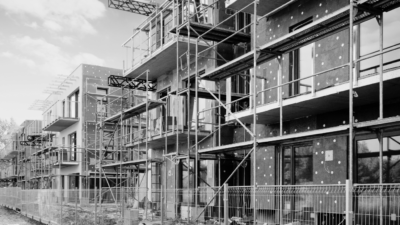Such has been the attention-grabbing frenzy of the wider property market in the last two years, the prime property sector’s fortunes have understandably flown under the radar.
After all, when the aggregate market is undergoing a sustained period of unprecedented transactional volume and extending on its own record highs month by month, the more moderate progress in premium property may have escaped the limelight.
The health of the overall market shows no signs of slowing yet – the latest Nationwide data indicates the strongest start to a year in property in close to two decades, with year-on-year price growth to January 2022 recorded at 11.2%.
However, even in the context of the property market’s eye-catching momentum, we should expect to see the prime market increasingly take the spotlight moving forward.
In fact, for all the furore around the aggregate market’s performance, prime has quietly undergone something of a renaissance over the last year.
Knight Frank, for instance, reported six consecutive months of price growth in Prime Central London in the second half of 2021, the longest sustained run of growth since before the Brexit referendum.
Meanwhile Savills has forecast 8% price growth for 2022, anticipating an impressive 23.9% growth trajectory to 2027.
As momentum continues to build, there are a number of key emerging trends worth observing, which could impact the PCL market’s longer-term outlook.
Return of overseas investors
The providence of PCL and international investors are intertwined, and so any discussion of the capital’s prime market will naturally begin here.
Over the past years, the pandemic has caused constraints in the access of overseas investors and therefore investment capital flows, limiting the market’s ability to attract international demand which has been the bedrock of its historic success.
Now, as travel corridors have widened and look to remain that way, PCL is geared to welcome back international investors.
Given that we have seen years of pent-up investment, and the prevailing low levels of stock in the market, we should expect to see overseas investors drive competition in the market and fuel price growth over the coming months.
London has a particular advantage over many comparable business and culture powerhouse cities, with Knight Frank positioning the UK’s capital as a prime example of a modern global city.
In truth, it has always been a safe haven for investors, and perhaps even more so now, in light of its demonstrated ability to withstand the global economic headwinds of the past years.
The race for space and the allure of city life
With the city once again open for business and the appeal of city life beginning to shine through, we should consider the influence of the past few years on buyer preferences and priorities when it comes to residential property.
The ‘race for space’ has also charged prime London transactions, a reflection of the pandemic-induced lifestyle changes and remote working patterns that continue to influence what buyers want from a home.
Data from Savills shows that since the implementation of the first pandemic restrictions in March 2020, the price of 6+ bedroom houses in west London has risen by 15.1%, against the backdrop of 2% growth for PCL as a whole in 2021.
As the market floods with new demand from domestic and overseas buyers, PCL should experience further competition-driven price increases, due to the vanishingly low stock of such sizeable premium properties.
We should also see a resurgence in appeal for the pied-a-terre, as appetite renews for part-time residences in the city.
Stamp Duty and interest rates may hamper growth
Just as the Stamp Duty Land Tax (SDLT) holiday fuelled unparalleled growth in the aggregate market, any future stamp duty surcharges affecting prime real estate investors could impact demand, restricting competition and price growth.
Before the Autumn Budget 2021, for instance, speculation was rife of a second-home purchase surcharge rise, from 3% to 4%. While this never came to pass, any future implementation is likely to drive down demand in PCL.
In turn, it is expected that interest rates will be revised upwards throughout the year, as the Bank of England looks to keep rising inflation in hand.
Depending on the pacing and substance of the rate hikes, we could expect to see a more modest acceleration of growth in prime property.
Positively, prime real estate has proven itself more inelastic to price variations than the market as a whole – for example, the potential £15,000 cost saving of the SDLT holiday did little to move the needle on demand.
Anything short of a significant increase in the cost of tax or borrowing should see the PCL market’s innate appeal to wealthy buyers and low stock keep competition and prices high.
Because of the PCL market’s return to form in 2021 and widely anticipated acceleration heading into 2022, we should certainly expect more focus to turn to prime real estate in the coming months.
Of course, in the UK property market it is always unwise to make firm assertions about what will happen, even in the short-to medium-term, but it is safe to say these trends will have a significant influence on the fortunes of PCL this year.





















Comments